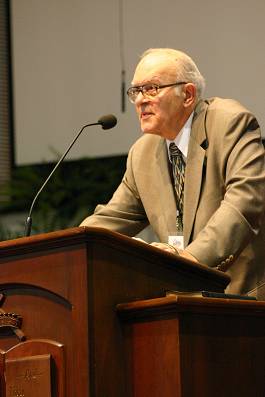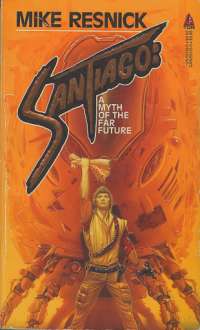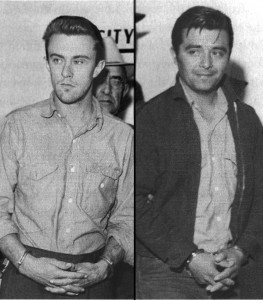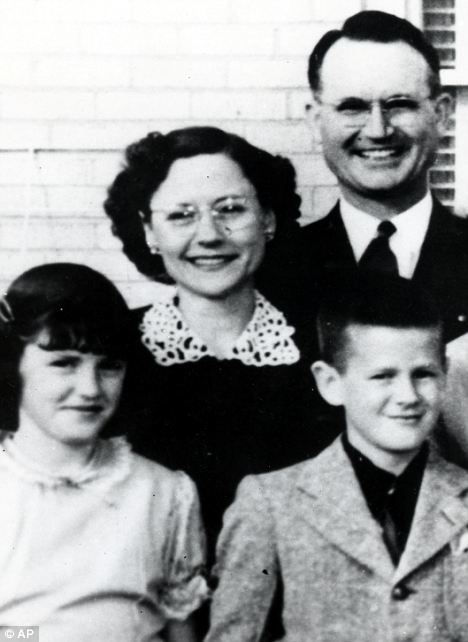Dr. Ray Van Neste is Assistant Professor of Christian Studies and Director of the R.C. Ryan Center for Biblical Studies at Union University in Jackson, TN. He is also one of the pastors of Cornerstone Community Church in Jackson. He has authored numerous works on the Bible and the church. His website is “Oversight of Souls.”
An Interview With Ray Van Neste on
“The Lord’s Supper in the Context of the Local Church”
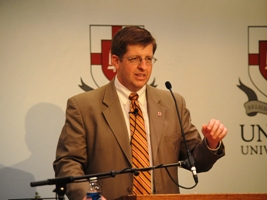 Dr. Van Neste, I would like to thank you for your insightful essay, “The Lord’s Supper in the Context of the Local Church,” found in the 2010 publication, The Lord’s Supper (Broadman & Holman Academic). You begin your essay by pointing to a diminished appreciation for healthy ritual and symbolism among modern Southern Baptists as a factor in our frequently weak approach to the Lord’s Supper. You also mention the negative and morose approach we often take to the Supper. I wonder if you would include a kind of neo-gnosticism among these factors, of the type that Harold Bloom and Philip Lee mentioned some years back? Is there a gnostic anti-materialist strain in Baptist ecclesiology and soteriology that favors the impartation of knowledge through non-material means over the physical elements of worship?
Dr. Van Neste, I would like to thank you for your insightful essay, “The Lord’s Supper in the Context of the Local Church,” found in the 2010 publication, The Lord’s Supper (Broadman & Holman Academic). You begin your essay by pointing to a diminished appreciation for healthy ritual and symbolism among modern Southern Baptists as a factor in our frequently weak approach to the Lord’s Supper. You also mention the negative and morose approach we often take to the Supper. I wonder if you would include a kind of neo-gnosticism among these factors, of the type that Harold Bloom and Philip Lee mentioned some years back? Is there a gnostic anti-materialist strain in Baptist ecclesiology and soteriology that favors the impartation of knowledge through non-material means over the physical elements of worship?
Yes, I believe so, though I don’t think this is a position which is thought out or often explicitly argued. But it is “in the air” so to speak. We seem to turn away from the earthiness of Christianity (and of life in general) in many ways. Somewhere C. S. Lewis spoke well of this issue noting specifically the earthiness of the Lord’s Supper. We are so drawn to an otherworldly, often monastic, view of spirituality. Losing our Reformational (and scriptural) moorings, too many people think of growing in godliness as withdrawing from day to day life. This has a lot of negative implications for us. C. S. Lewis has been very helpful to me in this area.
I wonder if you could react a bit to Luther’s statement (and I’m paraphrasing here) that he would rather drink blood with the papists than mere wine with the enthusiasts. Are you sympathetic to the sentiment behind this assertion?
It can be tricky to align yourself too quickly with some of Luther’s retorts! But, in general, there is a significant problem in Baptist churches of being more concerned about what the Lord’s Supper isn’t than what it is. When we stress merely what it isn’t, then we leave people wondering, “Why bother?” It isn’t anything real. It’s only a symbol. It’s not necessary for anything it seems, so why bother? As Millard Erickson has said, Baptists have produced the doctrine of the real absence of Christ!
We need much more constructive theology discussing what the Supper is, what it is supposed to communicate and how it aids us.
Must Baptists be Zwinglian in our approach to the Supper?
There is some debate as to how “Zwinglian” Zwingli was, though I am not up on the most recent aspects of that conversation. I do think, with Zwingli, that the Supper is a memorial, that is, it functions to cause us to remember. Jesus said this. The question, though, is whether or not there is more going on. Numerous Baptists through the centuries have affirmed a view of the Supper closely akin to Calvin’s view, that Christ is spiritually present with his people at the Table. So, Baptist views have varied.
I think the “fellowship” language in 1 Cor 10:16-17 is quite strong, suggesting this is not a mere memorial. It is at least profession of faith.
I’m struck by your use of sacramental language. In what sense is it appropriate to refer to the Lord’s Supper as “a sacrament”?
Yes, I chose to use this language as I noticed that prominent Baptist authors in the past (e.g. B. H. Carroll) had readily used it. When I use this term, like Baptists before me, I do not mean the Roman Catholic sense that the action in itself causes grace. I am concerned that Baptists, in reaction to Catholic overstatement of what happens at the Table, have downplayed what happens there. You often here much more about what it is not than what it is. Along with other Protestants, we can affirm that the sacraments are sure witnesses of God’s grace toward us. They are God ordained means of God’s blessing as they bear witness to the gospel.
Your call for open communion seems to go against the grain of many current conservative Southern Baptist academic voices. I found it refreshing, and I agree with you. I found your arguments to be among the more persuasive that I’ve read. Why do you believe that British Baptists have been more open to open communion than American Baptists?
Thank you. That is probably the most controversial portion of my chapter, though a key part in my mind.
This is a good question, but one I’m not sure I can answer. I haven’t looked into this enough to provide a sure footed answer, but I’ll make a couple of observations. Some will probably note that British Baptists on the whole are far less conservative than Baptists in America and suggest this explains their openness to open communion. However, I don’t think this argument will work since open communion can be found among British Baptists well before the slide to a more liberal theology took place.
Another possible contributing factor could be the impact of Landmarkism in the US and the fact there was no similar impact in the UK. The strength of Landmarkism kept many in the US from addressing the issue along the way. This would still not be a full explanation, but perhaps it is a contributing factor.
Finally, the one part of your essay that gave me pause was when you noted that, in your opinion, it is not appropriate to take the Lord’s Supper to homebound members as that would be an un-churchly observance (my phrasing there, not yours). I appreciate your own humility in saying that. You were not dogmatic about it. I also get the logic of what you are saying. But I am thinking about a time some years ago when a brother in Christ flew with me to visit another church member on his deathbed in a hospital in another state. I took the Lord’s Supper to him. The three of us had prayer together, read the Word, and observed the Supper. It was a powerful, moving experience that my friend and I still speak of. I am not trying to elevate feeling above clear inference here, but it did seem to me that, at that time, the church had gathered. For instance, there are churches with scarcely more than 3 or 4 people in them. Respectfully, I’m curious to know how what we did in that hospital room differs from a small church of the same number of believers meeting and observing the Supper?
Yes, as you noted, I am more tentative here as we are working from inferences. I don’t want to be adamant where the Scripture is less explicit. We are here considering issues of best practice.
However, if it is a church ordinance, then the difference between the hospital gathering and a small church is that the small church recognizes itself and is recognized by others as a church. The hospital gathering is not so recognized or structured.
I recognize the tension, but I also wonder what sort of parameters we have if this moves outside the gathered worship of the church. Can families observe the Supper at home as they see fit? What about retreats, conferences and seminars? The scriptures do not say only pastors can administer the supper (as most Baptist documents recognize), so we could have a few students in a dorm room celebrating Communion.
Communion in Scripture seems to be rooted in corporate worship and it seems best and safest to me to keep it there.

